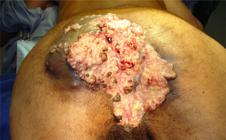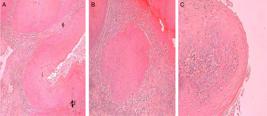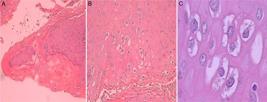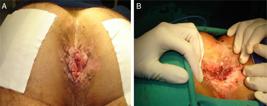ABSTRACT
Buschke-Loewenstein Tumor or giant condyloma acuminatum is a disease caused by a DNA virus, the self-inoculable human papilloma virus (HPV), being sexually transmitted. Histologically BLT is a benign tumor, but with malignant clinical behavior and a high propensity for local recurrence and malignant degeneration. The clinical picture consists of the presence of a cauliflower-like bulky condylomatous perianal mass with multiple fistulous tracts, which can cause great destruction of the anal canal, with invasion of adjacent tissues. Bleeding, foul odor, local pain and weight loss are also described. The diagnosis is established by biopsy, that should exclude the presence of malignant transformation, which occurs in 30-50% of cases. Associated with a biopsy, the hybridization test may be performed to diagnose HPV infection, especially subtypes 6 and 11, that are commonly related. The treatment of choice is radical surgical excision; however, those patients presenting with extensive fistulous lesions may require a temporary colostomy. Some authors advocate an abdominoperineal resection in cases of infiltration of the sphincter or rectum. This study was designed to evaluate the experience of the service of Coloproctology at a referral hospital in Northeastern Brazil with this rare entity, contributing to world literature in addressing this disease.
Giant condyloma acuminatum; Buschke-Loewenstein Tumor; Verrucous carcinoma; Human papillomavirus

 Thumbnail
Thumbnail
 Thumbnail
Thumbnail
 Thumbnail
Thumbnail
 Thumbnail
Thumbnail
 Thumbnail
Thumbnail
 Thumbnail
Thumbnail
 Thumbnail
Thumbnail
 Thumbnail
Thumbnail







